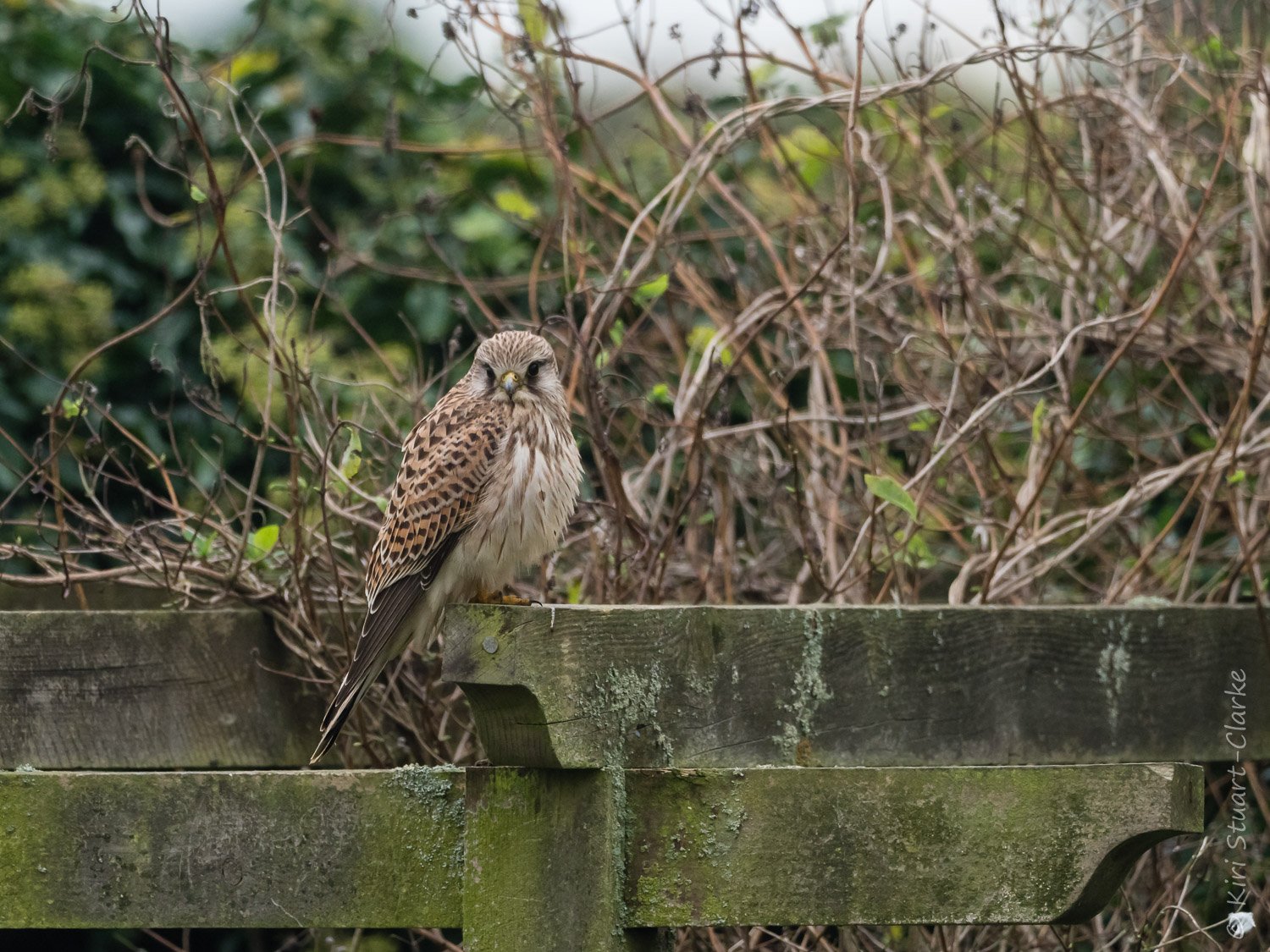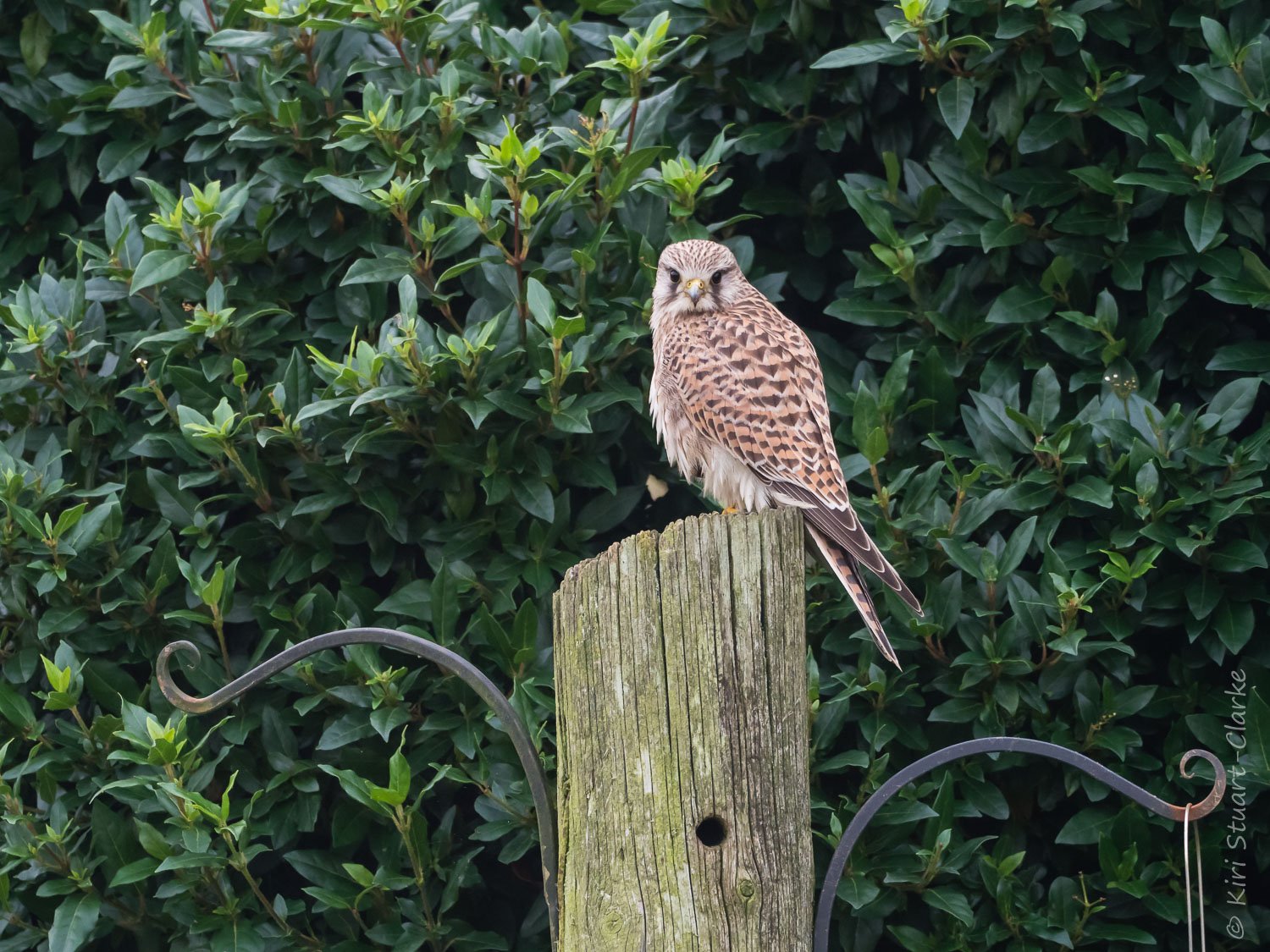Falco tinnunculus, juvenile
Our next autumnal excitement arose from a series of long sightings of a young Kestrel, Falco tinnunculus, at the end of October. Whats the big deal? You might ask. After all, we see kestrels hovering in the paddocks and fields surrounding our home all the time. And have even enjoyed the odd fly by or spotted one perched up on our boundary telegraph pole looking out for prey.
But in eight years I’d never actually seen a Kestrel actually land on our property and I’d never ever observed one so close up before, especially not for so long at a time, and repeatedly over a period of several days.
We suspect he or she might be a juvenile ousted from the family home as they disperse widely in Autumn. Or else they could have been a young immigrant, newly arrived from Europe, as Kestrels living further north migrate southwards to overwinter where there is more food available.
We know its a young bird as juveniles have much more diffuse pale buff streaks on their undersides rather than the clear, dark distinctive spots on the plumage of adult birds. Young birds of prey are generally paler and and darken as they mature. The paler head could possibly mean its a male according to our detailed Collins “Birds of Prey” ID book by Benny Gensbol.
There are around 31 thousand summer pairs in Britain in the UK and sadly the species is listed as Amber nationally due to recent breeding and winter population and range declines according to BTO BirdFacts, but populations appear to be stable locally in Norfolk and are of least concern in Europe. One study found that populations improved with the addition of dedicated Kestrel breeding boxes so perhaps lack of suitable breeding sites is part of the problem.
We continued to enjoy prolonged, close sightings on the lawn, the pergola and, unfortunately for our small garden birds, the peanut feeder pole at the bottom of our garden for several days in a row, one time mantling on the ground and one time carrying prey to the pergola then feeding.
Perhaps the Kestrel lingered awhile because our wildlife friendly garden offers plenty of small rodents and birds, the Kestrel’s main diet source in Northern Europe, before he moved onwards on his journey.


